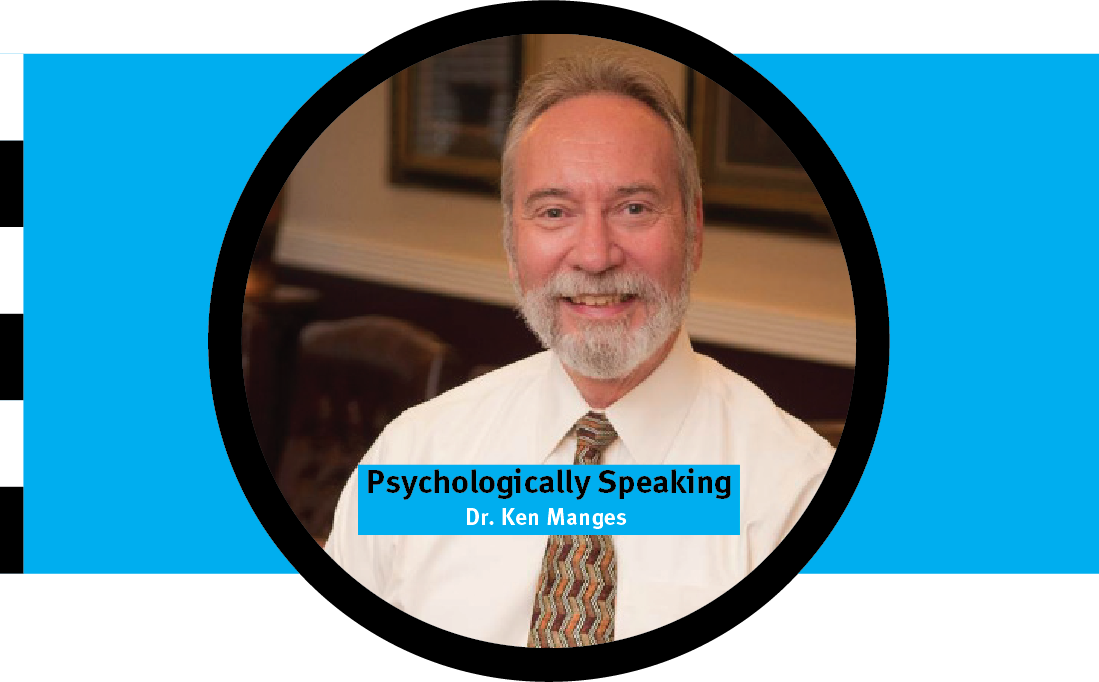
A recent NY Times opinion piece by Erik Vance had me thinking about how some of the persons I see as a forensic and as a clinical psychologist have a difficult time coming back from a defeat or challenge.
Vance had been second guessing himself and noticing that, as he is getting older, he is becoming less resilient. What about you? Are your challenges getting more difficult?
Resilience is the ability to bounce back after something has gone haywire. For most of us, in this imperfect world we live in, something going wrong with our plans isn’t too surprising, is it? But what do you do when it comes to your recovery?
Erik sought the advice of some experts and came up with some good points, which is what caused me to consider writing this column.
Resilience is part grit, part perseverance, part patience and part self-forgiveness. Although its great to have perfection as a goal, the sages and some of the experts (who I’ll talk about in a minute) suggest, in my words, that perfection is the enemy of happiness or contentment. In other words, when we plan, it would be helpful to have a plan B and when plan A doesn’t get the job done perfectly. Consider it a learning experience rather than a defeat.
In the book “The Five Practices of Highly Resilient People: Why Some Flourish While others Fold,” Dr. Taryn Marie Stejskal offers five myths about resilience.
Myth # 1: “Resilience is about bouncing back.” Stejskal says no! She says, “Resilient people bounce forward, not back.” She goes on to say it’s okay “to allow ourselves to be changed by our experience.” Imagine that, defeat is not a weakness! Consider your failure as a signal that something about our approach has to change.
Myth # 2: “Resilience is about waiting for time to heal our wounds.” Stejskal says no. As it turns out, those with the greatest resilience are those who are active about missing the mark. Stejskal suggests that “resilience isn’t about waiting to recover but rather being the genesis of your own inspiration.”
Myth # 3: “We are born with a certain amount of resilience.” Stejskal says no way. Any resilient person will confess, their resilience is ever changing, not fixed or finite. Stejskal talks about how our resilience builds our strength and when we have faced a defeat and overcome it, we gain an inner strength. I agree. Although it’s terrible not to be as victorious as you would have liked, it’s still empowering to have failed and then to have realized a new strength. What do you think?
Myth # 4: “Resilience is about ignoring our inner selves.” Stejskal says no. She says when we connect with our inner selves we are actually practicing prevention. Stejskal gives the example of how wrong it is to “put your head down and keep going.” Instead, she says, listen to what your body is telling you. “Pushing through” is a recipe for burnout and exhaustion.
Myth # 5: “Optimism makes us more resilient.” Stejskal doesn’t believe it. She says “being a realist (and an optimist) creates greater resilience.” She goes on to say “while painting a picture of a bright future is important so too is confronting the brutal reality of today.” Sounds like a balance of being optimistic about a potential outcome, along with knowing that all is not lost if everything doesn’t go exactly according to plan, will allow you some well deserved breathing room should you fall a few inches short of your goal. Consider a follow up to plan A and incorporate what to do differently the next time.
Elizabeth Edwards once said, “She stood in the storm and when the wind did not blow her way, she adjusted her sails.”
Getting back to Erik Vance for a moment, he quotes Kathryn Howell, a psychology professor at the University of Wisconsin-Madison. Howell is all about how not to consider yourself an island. When thinking about building resilience, think about building yourself a community from whom to gain strength and support.
Other tips and hacks to consider while building self-resilience is to use meditation, self-compassion, practice gratitude, and consider practicing humility and graciousness.
Nelson Mandela once said,“Do not judge me by my success, judge me by how many times I fell down and got back up again.”
Another expert that Erik Vance consulted was Sherry Hamby, a psychology professor at the University of the South in Tennessee. Hamby studies resilience in impoverished communities. According to Vance, Hamby has found the “most powerful predictor of resilience to traumatic events is your connection to something larger than yourself, whether its G-d, family, or country…”
What guides you? When you’re recovering from defeat, where do you go for your mental, spiritual or physical recovery?
How would you rank your resilience? The Connor-Davidson Resilience scale (CD-RISC) comprised of 25 items, each rated on a 5-point scale (0–4), with higher scores reflecting greater resilience helps to quantify an individual’s resilience.
According to Kathryn Conner and Jonathan R.T. Davidson’s 2003 article “Development of a New Resilience Scale: The Connor -Davidson Resilience Scale (CD-RISC), “resilience may be viewed as a measure of coping ability and in part, could be a target in the treatment of anxiety, depression and stress reactions.”
In their attempt to quantify resilience, Connor and Davidson developed their 25 questions as exemplified by #1. Your ability to adapt to change, # 10 To do your best, no matter what, to #25 the level of pride you take in your accomplishments. They then asked the participants to rank themselves from 0 to 4 on all twenty-five. They had some positive results and concluded “resilience is modifiable and can improve…” So, there is hope after all!
Be well. Stay safe.
Thanks for reading the column. Please go to the AI website (americanisraelite.com) and post a comment.
Questions? Suggestions? Send me an email at psychology@americanisraelite.com. See you here next month.




